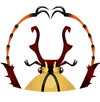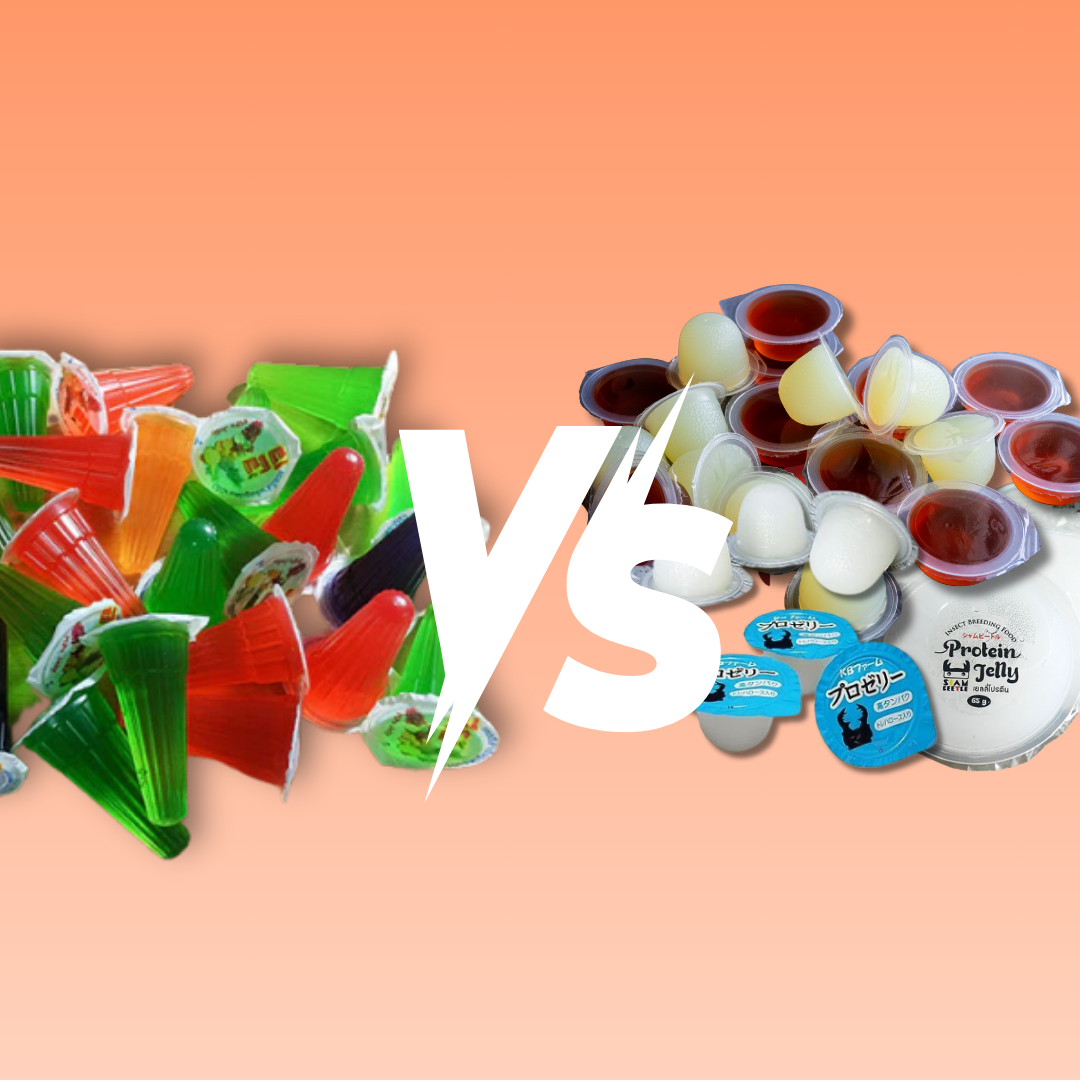Breeding Report of Jumnos Ruckeri | รายงานการเพาะพันธุ์แมลงทับจุดเหลือง
In this breeding report, I focus on Jumnos ruckeri, a celebrated Thai species of Cetoniinae cherished by beetle breeders and flower beetle enthusiasts around the world. Having successfully bred them up to the 3rd generation, I would like to share just how simple and straightforward breeding this species can be
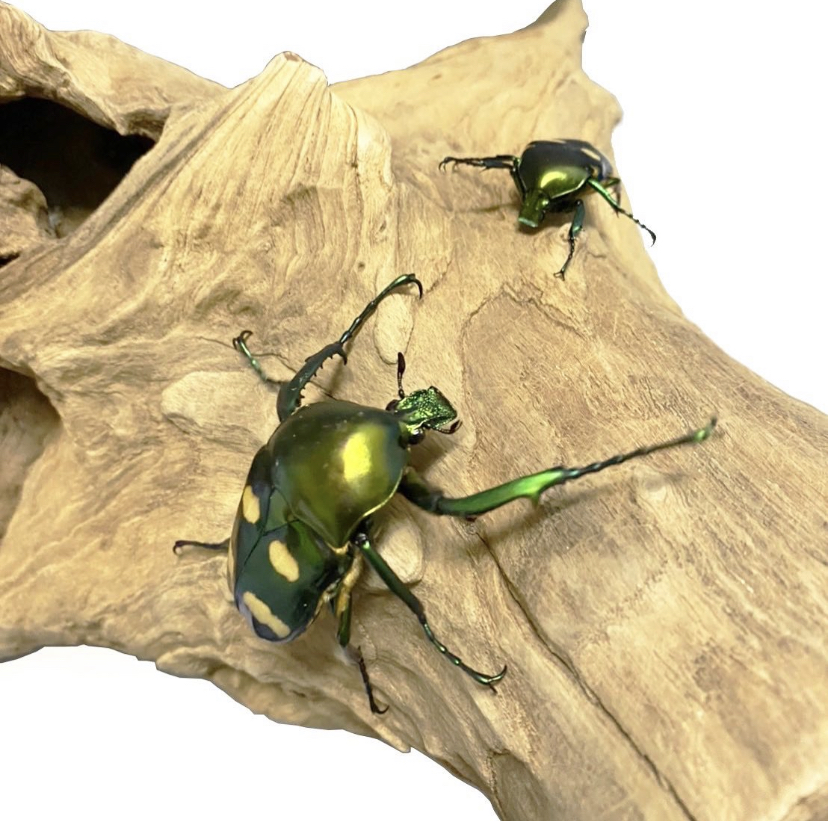
ในรายงานการเพาะเลี้ยงฉบับนี้ ผู้เขียนขอนำเสนอ Jumnos ruckeri ซึ่งเป็นแมลงดอกไม้ในวงศ์เซโตนินี (Cetoniinae) หรือวงศ์ด้วงดอกไม้ สายพันธุ์ด้วงดอกไม้ไทยที่มีชื่อเสียงและเป็นที่ชื่นชอบในหมู่ผู้เพาะเลี้ยงแมลงและผู้ที่ชื่นชอบแมลงดอกไม้ทั่วโลก โดยผู้เขียนได้เพาะเลี้ยงพวกมันจนถึงรุ่นที่ 3 ได้สำเร็จ และอยากจะแชร์ให้ผู้อ่านทุกท่านได้ทราบถึงความง่ายดายในการเพาะเลี้ยงสายพันธุ์นี้
Anatomy | ลักษณะทางกายวิภาค
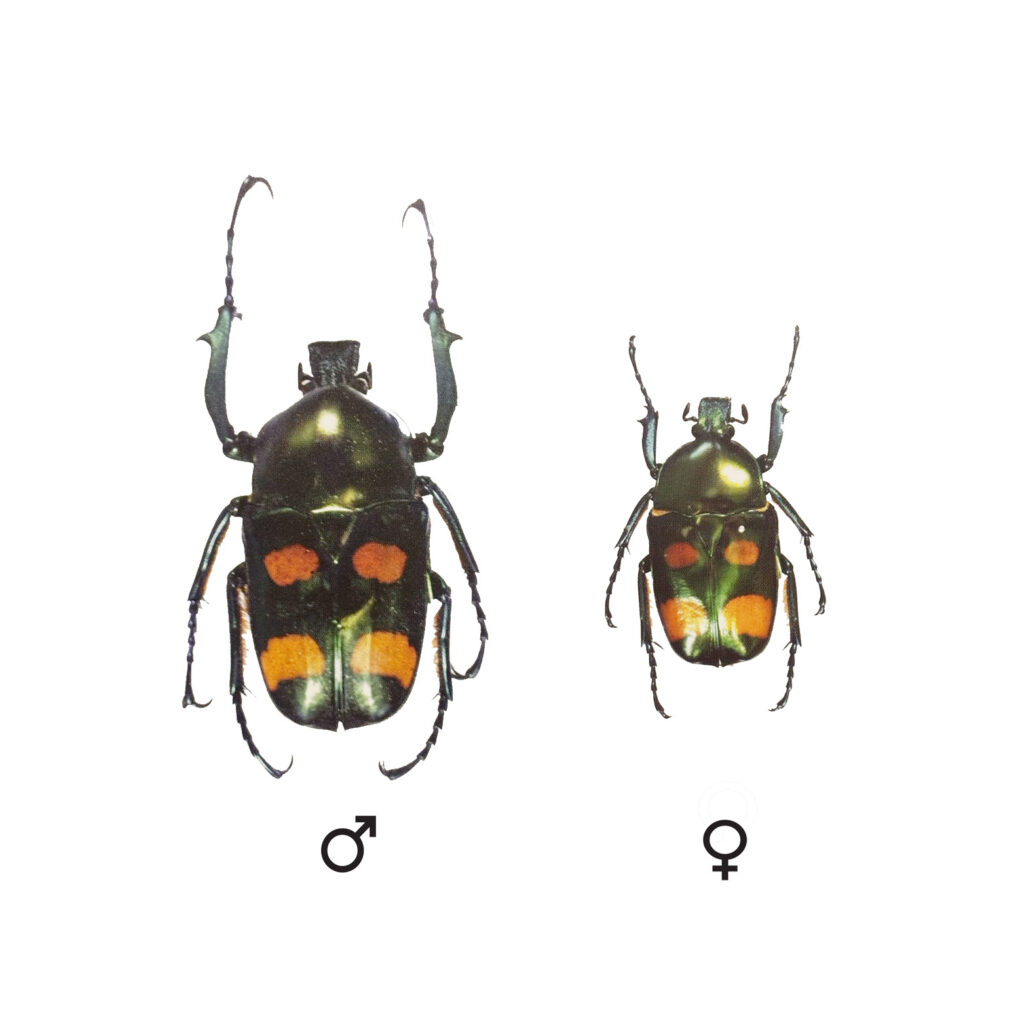
Scientific name | ชื่อวิทยาศาสตร์: Jumnos ruckeri (Saunders, 1839)
Length | ขนาด: (♂) 39-55 mm. (♀) 38-45 mm.
Distribution | พื้นที่กระจาย: Northern Thailand (ไทย), and India (อินเดีย)
The beetle features a deep metallic green color, smooth and glossy, with elytra adorned by two prominent orange-yellow spots—one positioned on the front half and a larger one on the rear half. The clypeus is relatively long, rough-textured on top, with straight, slightly outward-diverging sides and a nearly straight front margin. The pronotum is strongly convex, with sharply rectangular posterior angles. In males (♂), the front legs are significantly elongated, and the tibiae have pronounced tubercles underneath. In females (♀), the front legs are shorter, and the tibiae lack any tubercles below.[1]
ด้วงชนิดนี้มีสีเขียวเมทัลลิกเข้ม เรียบและเงางาม โดยปีกแข็ง (elytra) มีจุดสีส้ม-เหลืองขนาดใหญ่สองจุด จุดหนึ่งอยู่บริเวณครึ่งหน้าของปีก และอีกจุดขนาดใหญ่กว่าอยู่ที่ครึ่งหลังของปีก ส่วนหัว (clypeus) ค่อนข้างยาว มีพื้นผิวขรุขระด้านบน ด้านข้างตรงและค่อยๆ กว้างออกเล็กน้อยไปทางด้านหน้า ขอบด้านหน้าตรงเกือบทั้งหมด ส่วนอกปล้องหน้า (pronotum) โค้งนูนอย่างชัดเจน โดยมีมุมหลังแหลมเป็นรูปสี่เหลี่ยมผืนผ้า ในตัวผู้ ขาหน้าจะยาวมากและมีปุ่มนูน (tubercles) ใต้กระดูกหน้าแข้ง (tibia) ในขณะที่ตัวเมีย ขาหน้าจะสั้นกว่าและไม่มีปุ่มนูนใต้กระดูกหน้าแข้ง
The Breeding Method | วิธีการเพาะ
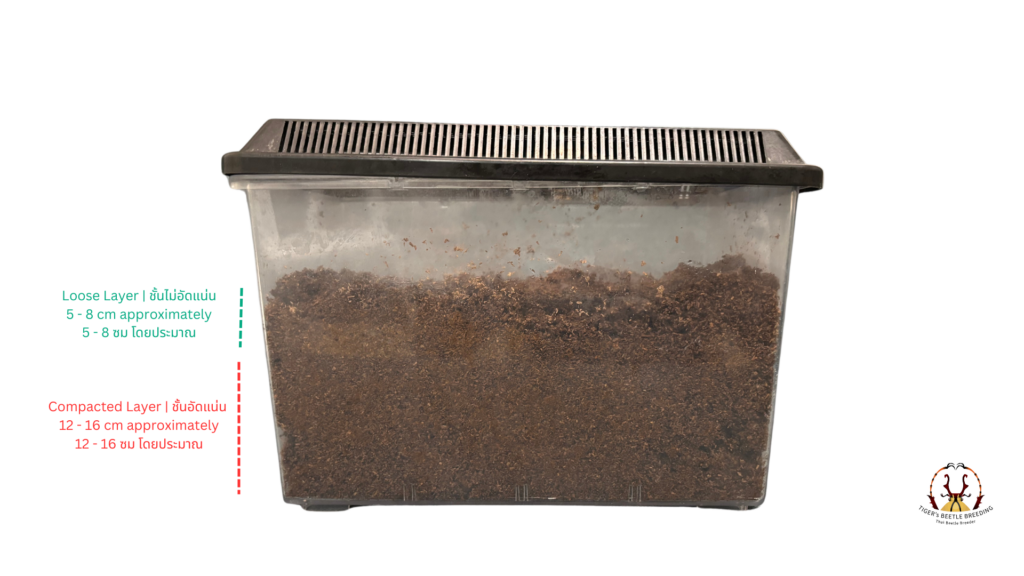
The breeding method is straightforward and can be adapted from the techniques used for breeding Dynastinae. Based on my experience raising three generations of Jumnos ruckeri, I used a container measuring 18 cm × 29 cm × 20 cm. The compacted substrate layer was about 5–7 cm thick, while the loose substrate layer was approximately 3–5 cm thick.
วิธีการเพาะเลี้ยงนั้นง่ายมาก และสามารถปรับใช้วิธีเดียวกับการเพาะเลี้ยงด้วงกว่าง (Dynastinae) กับ Jumnos ruckeri ได้ จากประสบการณ์ของผู้เขียนในการเพาะเลี้ยงพวกมันจนได้ลูกหลานถึงสามรุ่น โดยใช้กล่องที่มีขนาด 18 ซม. × 29 ซม. × 20 ซม. ความสูงของชั้นวัสดุที่อัดแน่นอยู่ที่ประมาณ 5–7 ซม. และความสูงของชั้นวัสดุที่หลวมอยู่ที่ประมาณ 3–5 ซม.
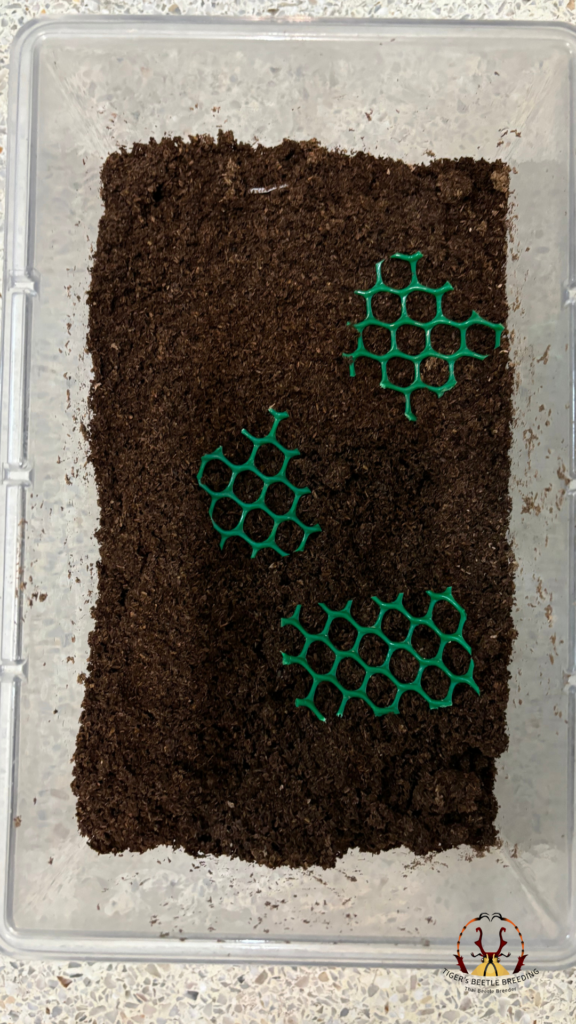
After preparing the breeding container, I decided to store it in a temperature-controlled refrigerator designed for beetle breeding for about three months. The larvae were then separated into individual containers for another 3–4 months. During this period, it was necessary to regularly observe whether the larvae had constructed the cocoons. If they had, the breeding material (substrate) should be removed from the containers, and the cocoons carefully taken out and placed in wood shavings instead. This helps reduce moisture in the chambers, as excess moisture can lead to mold growth on the pupae.


เมื่อจัดเตรียมถังเพาะเรียบร้อยแล้ว ผู้เขียนตัดสินใจเก็บถังเพาะไว้ในตู้แช่เย็นที่ควบคุมอุณหภูมิสำหรับเพาะเลี้ยงด้วงเป็นเวลาประมาณ 3 เดือน จากนั้นจึงแยกตัวอ่อนออกมาเลี้ยงในกระปุกเดี่ยวเป็นระยะเวลา 3–4 เดือน ในช่วงเวลานี้ต้องคอยสังเกตว่าตัวอ่อนได้สร้างกระเปราะดักแด้หรือยัง หากพบว่ามีการสร้างกระเปราะแล้ว ควรรื้อวัสดุเพาะ (แมท) ออกจากกระปุก และนำกระเปราะดักแด้ออกมาใส่ไว้ในขี้เรื่อยแทน เพื่อช่วยลดความชื้นจากกระเปราะ เนื่องจากความชื้นอาจทำให้เกิดเชื้อราในดักแด้ได้
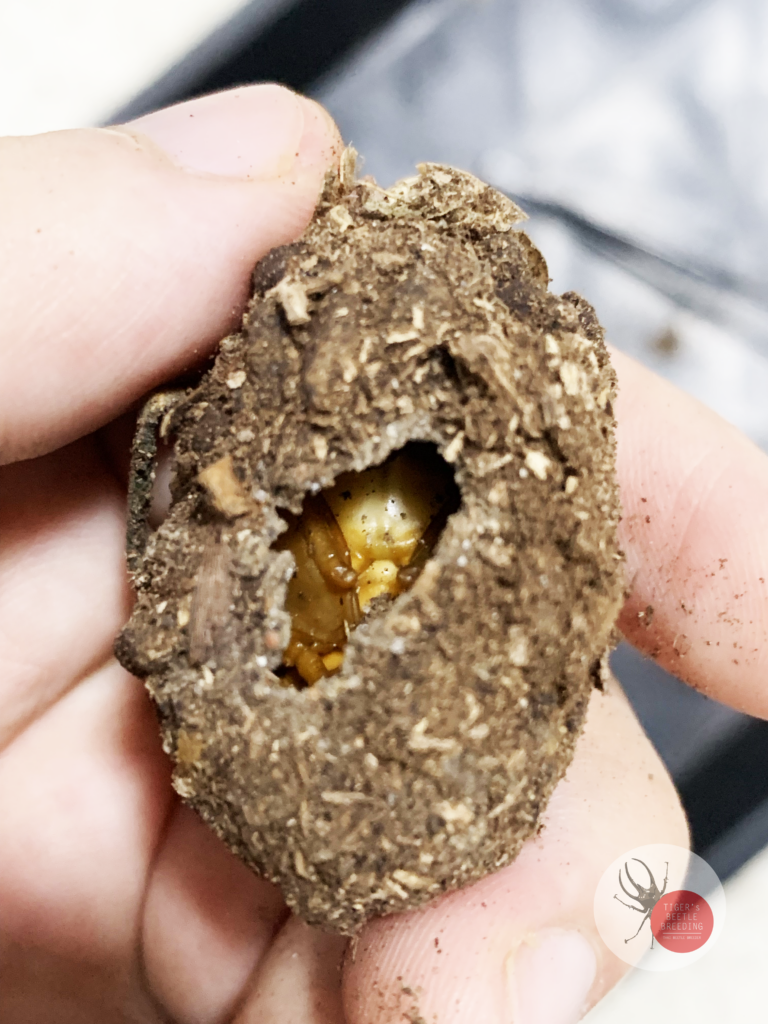
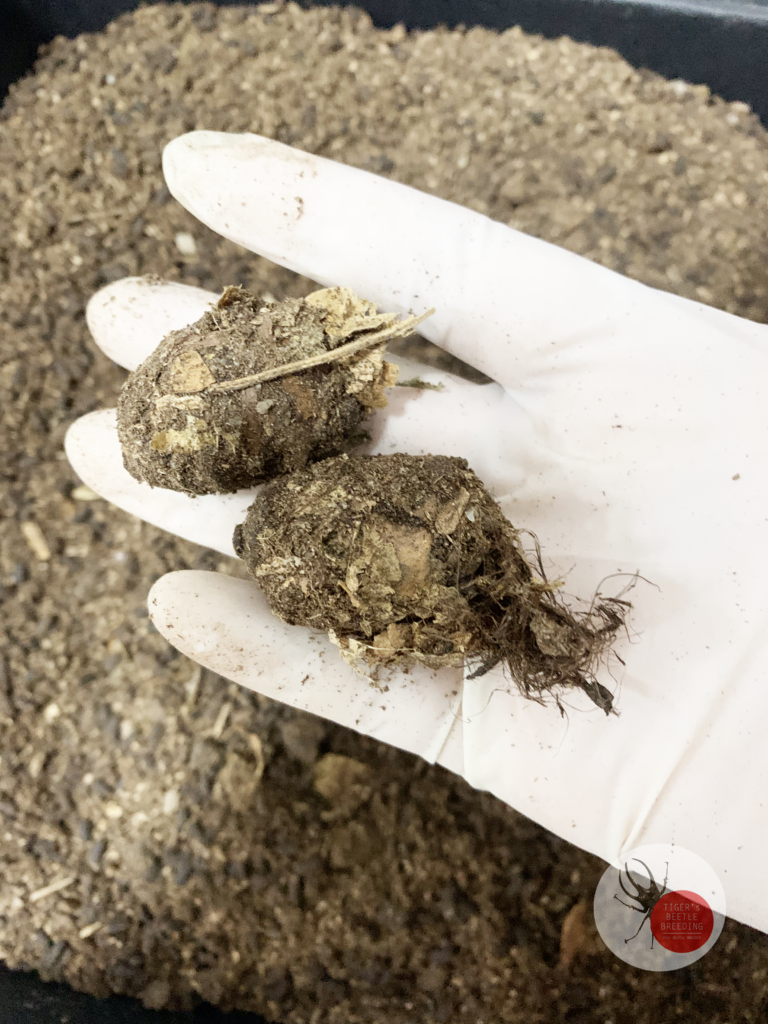
Observing the transition from the pupal stage to adulthood is an important step that readers should pay close attention to. I recommend carefully opening the cocoon using tweezers to gently pry it apart and observe the developmental stages of the larvae. Unfortunately, the author did not document this process with photos, so example images of this beetle species have been provided instead. Once they have fully developed into adult flower beetles, you can immediately feed them with beetle jelly or fruits.
การสังเกตการเปลี่ยนแปลงจากระยะดักแด้สู่ตัวเต็มวัยเป็นขั้นตอนสำคัญที่ผู้อ่านควรให้ความสำคัญ ผู้เขียนแนะนำวิธีการเปิดเปลือกกระเปราะดักแด้ โดยใช้ปากคีบค่อยๆ แงะเปลือกออกอย่างระมัดระวัง เพื่อสังเกตพัฒนาการในแต่ละระยะของตัวอ่อน อย่างไรก็ตาม น่าเสียดายที่ผู้เขียนไม่ได้บันทึกภาพขั้นตอนนี้ไว้ จึงนำภาพตัวอย่างของด้วงชนิดนี้มาให้ชมแทน หากพวกมันพัฒนาเป็นด้วงดอกไม้ตัวเต็มวัยแล้ว สามารถให้อาหาร เช่น เยลลี่ด้วงหรือผลไม้ได้ทันที
Sexing In The Larval Stage | การแยกเพศระยะตัวอ่อน


The sex of flower beetle larvae can be determined by observing the tip of their body. Male larvae (♂) will have a black spot in the center, which may be difficult to notice if the larvae are moving or very small, but it is generally visible. Female larvae (♀), on the other hand, do not have this black spot.
การแยกเพศของตัวอ่อนด้วงดอกไม้สามารถทำได้โดยการสังเกตบริเวณส่วนปลายของลำตัว หากเป็นเพศผู้ (♂) จะมีจุดสีดำอยู่ตรงกลาง ซึ่งอาจสังเกตได้ยากหากตัวอ่อนกำลังเคลื่อนไหวหรือมีขนาดเล็ก แต่โดยทั่วไปจะสามารถมองเห็นได้ ส่วนตัวอ่อนเพศเมีย (♀) จะไม่มีจุดสีดำดังกล่าว
Life Cycle | วงจรชีวิต
In this section, the information about the life cycle of Jumnos ruckeri is based on my general observations.
ในส่วนนี้ ข้อมูลเกี่ยวกับวัฏจักรชีวิตของแมลงทับจุดเหลือง (Jumnos ruckeri) ได้มาจากการสังเกตโดยรวมของผู้เขียน
| Stages | ระยะ |
| Egg : 2 weeks (14 days) | ระยะไข่ : 2 สัปดาห์ (14 วัน) |
| Larva : 7 ~ 9 months | ระยะตัวอ่อน : 7 ~ 9 เดือน |
| Adult : 3 ~ 6 months | ระยะเต็มวัย : 3 ~ 6 เดือน |
Conclusion | สรุป
Breeding Jumnos ruckeri is a simple and effective process that can be adapted from the methods used for Dynastinae. With proper care, including the right container setup, temperature control, and regular monitoring, successful breeding can be achieved. Observing the larvae as they transition to pupae and eventually to adult beetles is crucial, and with attention to moisture control, you can ensure healthy development. Once they reach adulthood, these beetles can be easily fed and enjoyed, providing a rewarding experience for breeders.
การเพาะเลี้ยง Jumnos ruckeri เป็นกระบวนการที่ง่ายและมีประสิทธิภาพ ซึ่งสามารถปรับใช้จากวิธีการเพาะเลี้ยงด้วงกว่าง (Dynastinae) ด้วยการดูแลที่เหมาะสม รวมถึงการเตรียมกล่องเพาะเลี้ยงที่ถูกต้อง การควบคุมอุณหภูมิ และการสังเกตอย่างสม่ำเสมอ ก็สามารถทำให้การเพาะเลี้ยงประสบผลสำเร็จได้ การสังเกตการเปลี่ยนแปลงจากตัวอ่อนสู่ระยะดักแด้และตัวเต็มวัยเป็นสิ่งสำคัญ และการควบคุมความชื้นอย่างระมัดระวังจะช่วยให้การพัฒนาเป็นไปอย่างราบรื่น เมื่อด้วงโตเต็มวัยแล้ว ก็สามารถให้อาหารได้ง่ายๆ และให้ความเพลิดเพลินแก่ผู้เพาะเลี้ยง
Citation | อ้างอิง
- Ek-Amnuay, Pisuth, 2008. Beetles Of Thailand. 2nd ed. Bangkok: Siam Insect-Zoo & Museum, p. 214-215.
